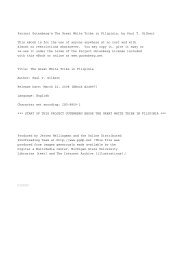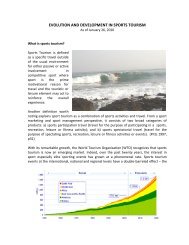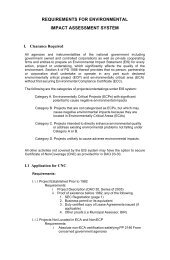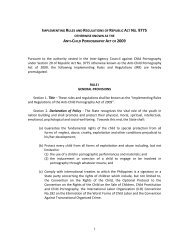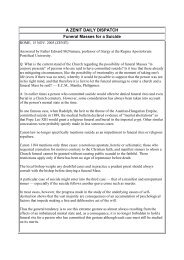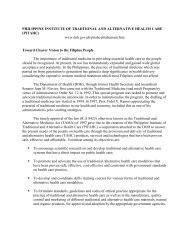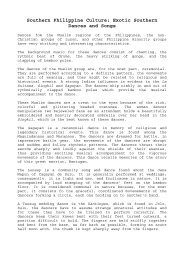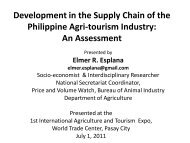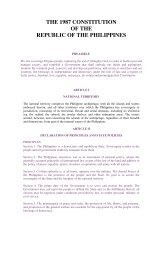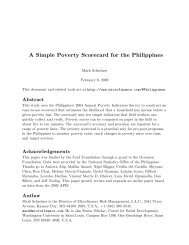Seahorse Research - About the Philippines
Seahorse Research - About the Philippines
Seahorse Research - About the Philippines
You also want an ePaper? Increase the reach of your titles
YUMPU automatically turns print PDFs into web optimized ePapers that Google loves.
Non-food FisheriesOur examination of <strong>the</strong> nature and scope of non-food fisheries has revealed largegaps in <strong>the</strong> available information on <strong>the</strong> extent of industries involved. For example,little is known about <strong>the</strong> use of fish and invertebrates for research and education, yetfishes represent a quarter of all animals used and only mice have a larger share. Alsopoorly documented are <strong>the</strong> fish lea<strong>the</strong>r and curiosity trades.<strong>Research</strong> Assistants Melissa Grey and Bob Hunt collaborated with Amanda Vincent on<strong>the</strong> first comprehensive reviews of <strong>the</strong> non-food fisheries. They catalogued morethan 80 species used in North America for research and education alone.Invertebrates, though difficult to assess because reporting is voluntary, mayrepresent more than a third of all animals used. Nearly half <strong>the</strong> fish used in researchand education are wild-caught, but as few researchers include provenance in <strong>the</strong>irstudies, it is difficult to predict effects on wild populations.The North American curio trade, meanwhile, represents an added pressure onstressed ecosystems. Dried fish, shells, crafts and jewelry sold as curios are typicallyfrom tropical reef habitats. The <strong>Philippines</strong> is a major exporter of <strong>the</strong>se goods and<strong>the</strong> United States a major importer. Minimum estimates indicate that imports ofwhole dried fishes are worth at least US$198,000 annually and involve 33 species.Invertebrate statistics are difficult to estimate but we suspect <strong>the</strong> scale of <strong>the</strong> trade ismuch larger and includes at least 24 species of echinoderms and arthropods.Hagfishes, sharks and stingrays, all characterized by a low reproductive potential,are particularly prized in <strong>the</strong> North American fish lea<strong>the</strong>r market. All lea<strong>the</strong>r fisheriesare open-access, and absorb <strong>the</strong> excess capacity from o<strong>the</strong>r regulated fisheries.Unfortunately, basic information on natural density and growth rates is severelylimited.There may be less concern over <strong>the</strong> collection of marine organisms for <strong>the</strong>development of drugs. Advances in technology over <strong>the</strong> last 30 years have led toreductions in <strong>the</strong> demand for initial bioprospecting samples. Through advances innatural products chemistry, researchers are finding syn<strong>the</strong>tic alternatives to supply<strong>the</strong> compounds necessary for drug development. Still, confidentiality agreementsmake it difficult to verify <strong>the</strong> sustainability of <strong>the</strong> industry.The manufacture of industrial, agricultural, biomedical and miscellaneous naturalproducts also consumes marine species. While living specimens are more commonlyused in environmental services, industry prefers <strong>the</strong> advantages of syn<strong>the</strong>ticproduction or culture to reliance on <strong>the</strong> harvest of wild populations. There are stillsignificant capture fisheries for biotechnology, however, including one for <strong>the</strong>horseshoe crab, whose blood clotting agent can detect bacterial toxins.The non-food fisheries research program was supported by <strong>the</strong> Pew Fellows Programin Marine Conservation.page 14



